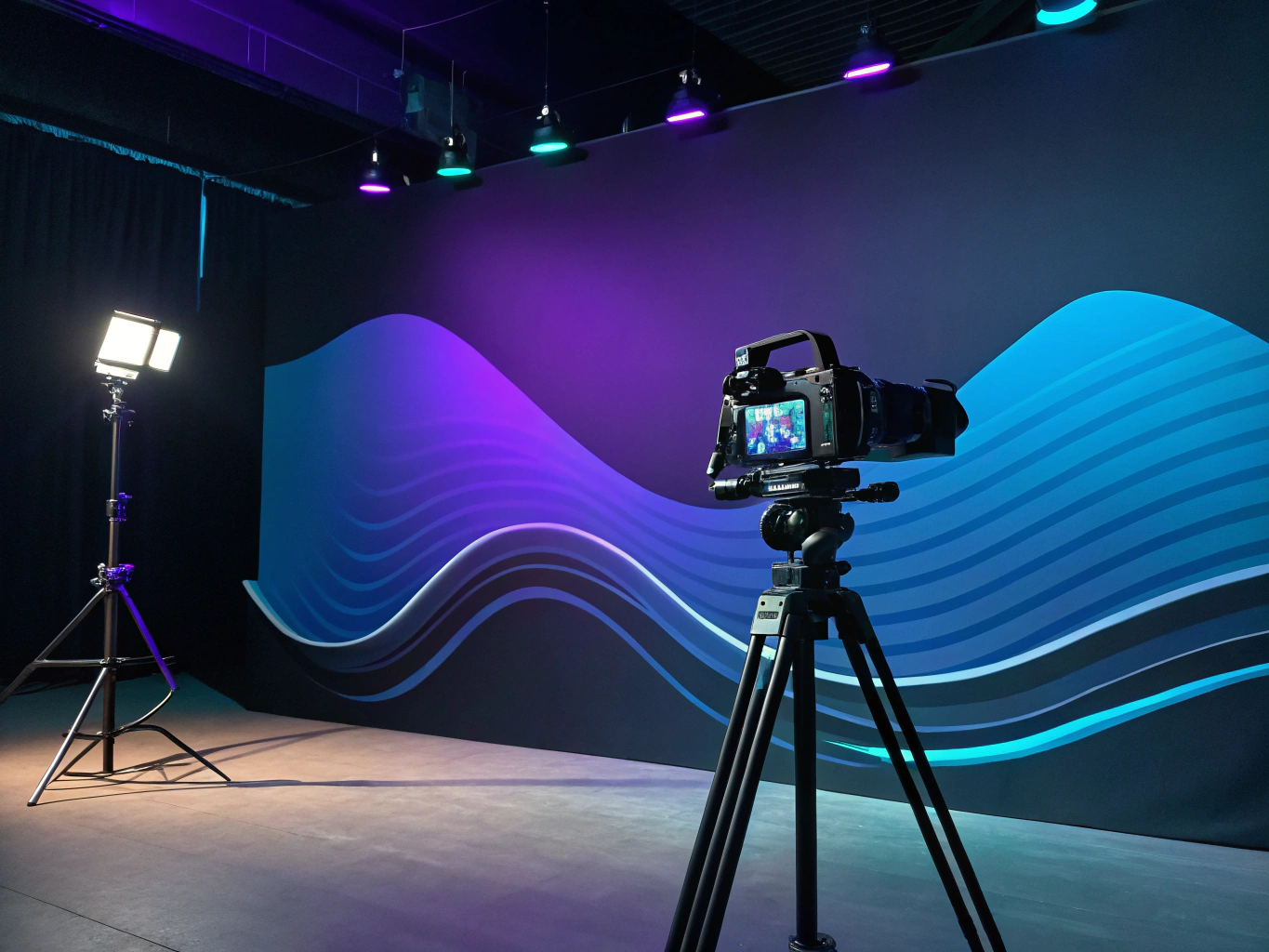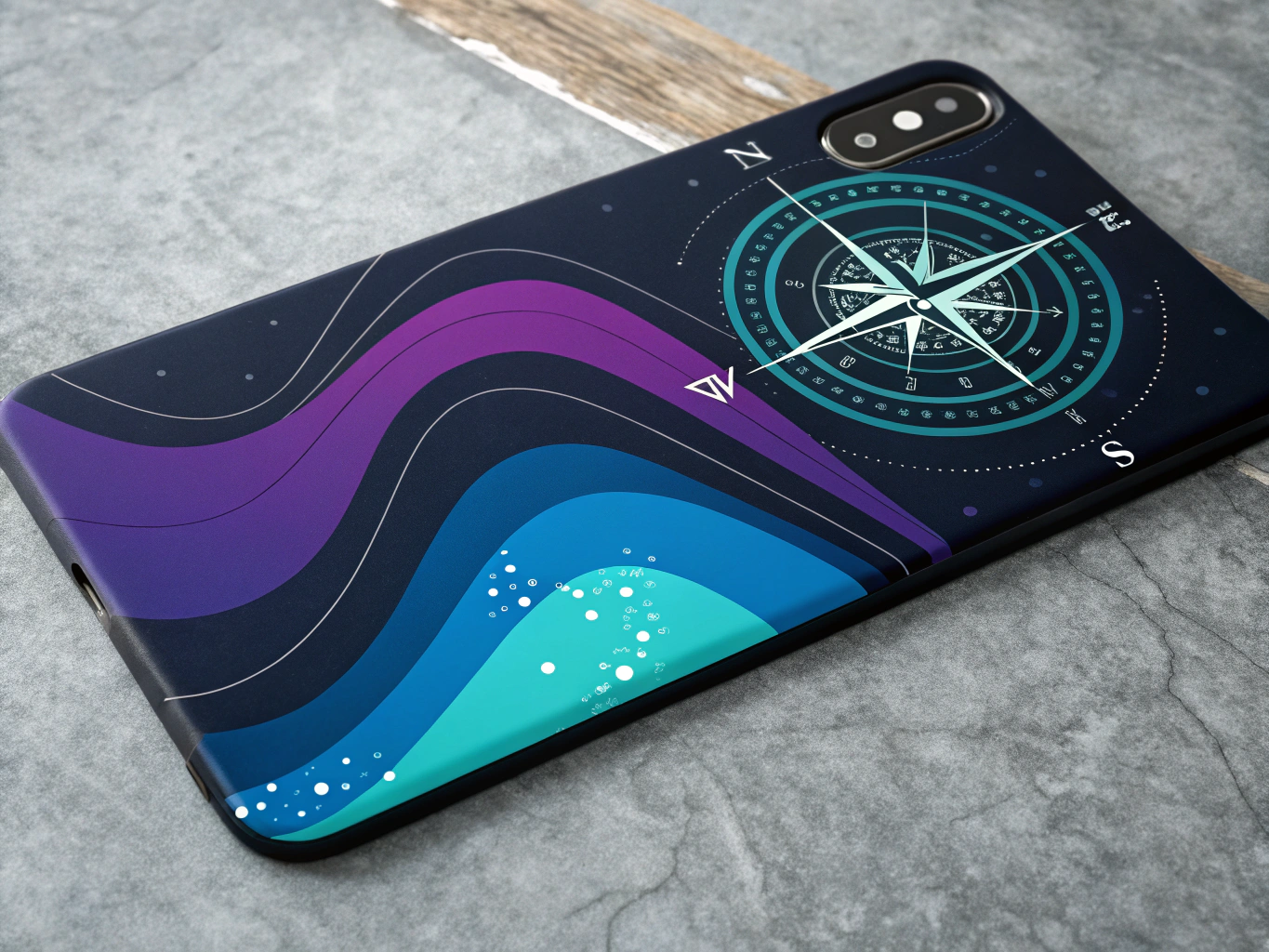The Hard Truth About Amazon Product Photography (That No One Wants to Tell You)
Let’s cut through the noise: your Amazon product photography probably isn’t as good as you think it is. I’ve reviewed thousands of listings through ProductScope AI, and here’s what keeps me up at night – roughly 80% of sellers are leaving money on the table because of subpar product images.

Think about it. When was the last time you bought something online without seeing what it looked like? Never, right? Yet somehow, we’re still seeing listings with blurry photos, shadows that look like they were shot in a cave, and backgrounds that are more off-white than pure white.
The thing is, Amazon product photography isn’t just about making things look pretty. It’s about trust, conversion, and ultimately, survival in the digital jungle that is Amazon’s marketplace. And if you’re thinking, “Well, my iPhone photos are good enough” – I hate to break it to you, but they’re probably not.
Why Amazon Product Photography Makes or Breaks Your Business

Here’s a stat that should wake you up: listings with professional product photography see an average conversion rate increase of 320% compared to amateur shots. That’s not a typo. Three hundred and twenty percent.
But before we dive into the how-to’s, let’s get real about what we’re actually trying to achieve here. Amazon’s not just a marketplace – it’s a virtual showroom where your product has milliseconds to make an impression. And in those milliseconds, potential buyers are making split-second decisions about your brand’s credibility.
The Technical Requirements You Can’t Ignore
Amazon’s pretty strict about their image requirements, and for good reason. They want consistency across their platform. Here are the must-haves:
- Pure white background for main images (RGB values of 255,255,255)
- Products should fill 85% of the frame
- Images must be at least 1000px on the longest side
- File format: JPEG, TIFF, or PNG
- Color space: sRGB or CMYK
The Psychology Behind Product Photography
Here’s something fascinating: our brains process images 60,000 times faster than text. That means your product photos are doing more heavy lifting than your bullet points or product description ever will. They’re not just showing what your product looks like – they’re telling a story about quality, value, and trustworthiness.
Essential Equipment: What You Actually Need
Let’s bust a myth right now: you don’t need a $3,000 camera setup to get started. But you do need some basics that go beyond your smartphone:
The Camera Situation
If you’re just starting out, here’s what works:
- A decent DSLR or mirrorless camera (Canon Rebel series works fine)
- A 50mm lens (the “nifty fifty” – usually around $100)
- Or, if you’re on a tight budget, the latest iPhone Pro or Google Pixel can work with proper lighting
Lighting: The Real Game-Changer
This is where most sellers mess up. Natural light is great for Instagram, but for Amazon product photography? You need consistency. Here’s your shopping list:
- Two softbox lights (minimum)
- A diffusion panel
- LED panels for product detail shots
The Studio Setup
You don’t need a fancy studio, but you do need:
- A sturdy tripod (non-negotiable)
- A white sweep background (can be paper or fabric)
- A table or platform for product placement
- Basic props for context shots
Here’s the truth bomb most “experts” won’t drop: it’s not about having the most expensive gear. It’s about knowing how to use what you have. I’ve seen stunning product photos shot with entry-level equipment, and I’ve seen terrible photos shot with top-of-the-line gear.
The Software Factor
Post-processing isn’t cheating – it’s essential. At minimum, you need:
- Adobe Lightroom (for basic adjustments)
- Adobe Photoshop (for background removal and detailed editing)
- Or budget alternatives like GIMP and Capture One
Think of post-processing like seasoning in cooking. The right amount enhances everything, but too much ruins the dish. Your goal isn’t to create fantasy products – it’s to show your actual products in their best light. For more in-depth tips, visit Shopify’s product photography guide.
The Business Impact of Professional Amazon Product Photography
Let’s get real about something that keeps me up at night: the massive gap between mediocre and exceptional product photography on Amazon. I’ve analyzed thousands of listings, and here’s what blows my mind – products with professional photography typically see conversion rates 2-3x higher than those with low-quality images.
Think about it. When was the last time you bought something on Amazon with terrible photos? Yeah, me neither. It’s like going on a blind date with someone who used their driver’s license photo on their dating profile. Hard pass.
Conversion Rate Statistics That’ll Make You Rethink Your Photography Budget
I recently worked with a brand selling premium coffee makers. Their initial conversion rate with smartphone photos? A painful 2.1%. After investing in professional amazon product photography with proper white background shots and lifestyle images? It jumped to 7.4%. That’s not just a statistical blip – it’s the difference between struggling to break even and scaling profitably.
But here’s where it gets really interesting. Our internal data at ProductScope shows that listings with at least 7 high-quality images from different angles see an average of 40% more time spent on their product detail page. More time = higher likelihood to buy. It’s not rocket science, but it is psychology.
Brand Perception and Trust: The Hidden ROI
Here’s something most sellers miss about amazon product photography – it’s not just about making your product look pretty. It’s about creating a subconscious trust signal in your customer’s brain. When they see crisp, professional images against a pure white background, something clicks: “This brand takes itself seriously.”
I’ve seen countless brands try to cut corners by using local photographers who don’t understand Amazon’s specific requirements. Sure, you might save a few hundred bucks upfront. But the long-term cost to your brand? That’s harder to calculate. For more detailed insights, check out HubSpot’s ultimate guide to product photography.
Essential Equipment for Amazon Product Photography

Now, let’s talk gear. But before you rush to max out your credit card on expensive equipment, remember this: the best camera is the one that meets Amazon’s technical requirements while fitting your budget and skill level.
Camera Equipment: The Smart Way to Invest
For most sellers, a mid-range DSLR or mirrorless camera will do the job perfectly. I’ve seen stunning product photos taken with a Canon Rebel T7i (around $700) that outperform shots from $3000+ cameras. Why? Because the photographer understood lighting and composition.
Here’s my must-haves list for amazon product photography:
- Camera body with at least 24MP resolution
- 35mm or 50mm prime lens (better for product detail than zoom lenses)
- Sturdy tripod (don’t skimp here – camera shake is your enemy)
- Remote shutter release (reduces camera shake further)
Lighting Setup: Where the Magic Happens
I can’t stress this enough – lighting makes or breaks product photography. I’ve seen $5000 cameras produce worse results than an iPhone with proper lighting. For Amazon’s pure white background requirement, you need:
- 2-3 softbox lights (minimum)
- LED panels for consistent color temperature
- Diffusion screens for managing reflective surfaces
- Background lights for achieving that perfect white background
Studio Essentials: The Unsung Heroes
Your studio setup doesn’t need to be fancy, but it does need to be functional. I converted my garage into a product photography studio for under $1000. Key components:
- Shooting table with sweep (crucial for that seamless white background)
- Various backdrop materials (white paper rolls are your friend)
- Clamps and stands for flexibility
- Storage solutions for equipment (trust me, this gets messy fast)
Professional Photography Techniques That Convert
Here’s where the rubber meets the road. Having all the right equipment is great, but knowing how to use it? That’s what separates the pros from the amateurs in amazon product photography.
The Three-Point Lighting Setup That Never Fails
After testing countless lighting configurations, I’ve found that a modified three-point lighting setup works best for Amazon product photography. Position your key light at 45 degrees, fill light opposite to reduce shadows, and rim light behind to separate the product from the background.
But here’s the trick most people miss – your background needs separate lighting to achieve that pure white background Amazon requires. Without it, you’ll end up with grey backgrounds that scream “amateur hour.”
Remember: Amazon’s algorithm actually checks image backgrounds. Too grey? Your listing might get suppressed. Too inconsistent across different angles? That could hurt your search ranking. In the world of amazon product photography, details matter. For a deeper dive, explore BigCommerce’s blog on product photography.
Advanced Photography Strategies for Amazon Success
Let’s get real about something – most Amazon sellers are still stuck in 2015 when it comes to product photography. They’re checking the basic boxes (white background, check!), but missing the bigger opportunity to tell a visual story that converts.
I’ve reviewed thousands of product detail pages through ProductScope AI, and here’s what separates the 6-figure sellers from everyone else: they understand that amazon product photography isn’t just about documentation – it’s about desire.
Creating Emotional Connection Through Lifestyle Photography
Think about the last time you bought something on Amazon. Did you buy the product, or did you buy into the lifestyle it promised? The best product photographers know how to capture both.
Here’s the thing about lifestyle shots – they need to feel authentic, not like those cheesy stock photos we all love to hate. Show your product in real environments, with real people (if applicable), doing real things. And please, for the love of all things commerce, avoid those painful forced smiles.
The Power of Different Angles and Pure White Mastery
You might think getting that pure white background is just about following Amazon’s rules. But here’s what most local photographers get wrong – it’s not just about making the background white, it’s about making your product pop against that pristine canvas.
I’ve seen too many sellers waste money on low quality shots that technically meet Amazon’s requirements but do nothing for conversion rates. The secret? It’s all about the interplay between different angles and lighting that creates depth, even on a pure white background. For more creative options, explore our white background resources.
Measuring Success Beyond the Basic Metrics

Here’s where things get interesting (and where most sellers completely drop the ball). Your amazon day delivery stats are great, but have you tracked how your image quality affects your conversion rate?
The Must-Haves of Performance Tracking
- Click-through rate comparison between different image styles
- A/B testing of main images (yes, you can do this on Amazon)
- Customer feedback analysis specifically related to product visuals
- Conversion rate changes after photography updates
The Future of Amazon Product Photography
Let me put on my futurist hat for a moment (it’s got LED lights and everything). The way we approach product photography is about to change dramatically, and if you’re not prepared, you’re going to get left behind.
AI-Powered Innovation
Remember when getting a product video meant hiring a production company and spending thousands? Those days are numbered. AI-powered tools are already revolutionizing how we create and edit product imagery. At ProductScope AI, we’re seeing brands create entire product catalogs worth of images in minutes instead of weeks.
But here’s the catch – AI isn’t replacing product photographers. It’s augmenting them. The best results come from combining human creativity with AI efficiency. Think of it as having a super-powered assistant who never sleeps and can handle the tedious parts of image editing.
The Rise of Interactive Product Photography
Static images? That’s so 2023. The future is interactive, immersive, and absolutely wild. We’re talking about:
- 360-degree product views that customers can control
- AR try-ons for everything from furniture to fashion
- AI-generated lifestyle scenes that adapt to viewer preferences
- Real-time product customization visualization
Final Thoughts: Making It All Work Together
Here’s what I want you to take away from all this: successful amazon product photography isn’t about any single technique or tool – it’s about creating a visual strategy that serves your business goals.
Whether you’re working with local photographers or diving into AI-powered solutions, remember that the end goal is the same: connecting with your customer and making that sale. The tools and techniques we’ve covered are just means to that end.
Action Steps for Immediate Implementation
- Audit your current product detail page images against competitor listings
- Identify gaps in your visual storytelling
- Test new image styles with A/B testing
- Consider hybrid approaches combining traditional photography with AI enhancement
And remember – in the world of ecommerce, your images are often the only chance you get to make a first impression. Make it count. Whether you’re just starting out or looking to up your game, the principles we’ve covered here will help you create product photography that not just meets Amazon’s requirements, but exceeds customer expectations.
The future of product photography is bright (and perfectly lit, with no shadows, on a pure white background, of course). The question is: are you ready to be part of it? For more inspiration, explore our background design ideas.
👉👉 Create Photos, Videos & Optimized Content in minutes 👈👈
Related Articles:
- 4 Best Product Photography Jobs for Amazon Listing Conversions
- Understanding Product Photography Pricing – ProductScope AI
- General Tips for All Product Photography – ProductScope AI
Frequently Asked Questions
How to become a product photographer for Amazon?
To become a product photographer for Amazon, start by building a strong portfolio that showcases your expertise in capturing high-quality product images. Consider taking courses in photography and post-processing to hone your skills, and familiarize yourself with Amazon’s image guidelines. Networking with brands that sell on Amazon and joining relevant online communities can also help you find opportunities in this niche.
Does Amazon take pictures of products?
Amazon itself does not typically take pictures of products; this responsibility usually falls to the sellers. Sellers are required to provide their own product images that meet Amazon’s specific image quality standards. However, Amazon does offer services like the Amazon Imaging Services where sellers can hire professionals to photograph their products.
How to create Amazon product photos?
To create effective Amazon product photos, ensure you use high-resolution cameras and proper lighting to highlight the product’s features. Stick to a clean, white background for the main image as per Amazon’s guidelines, and include multiple angles and lifestyle shots to give potential buyers a comprehensive view. Post-processing can enhance image quality, but make sure the photos remain true to the actual product.
Can you sell photography on Amazon?
While Amazon does not allow the direct sale of photography services on its marketplace, photographers can offer their services through Amazon-related platforms or third-party sites that cater to Amazon sellers. Additionally, photographers can sell photography equipment and related products on Amazon if they meet the seller requirements.
How to do product photography for amazon?
Product photography for Amazon requires attention to detail to meet Amazon’s guidelines. Use a high-quality camera and good lighting to capture clear, sharp images. Ensure the main product photo has a pure white background, and complement it with additional images showing different angles, close-ups, and the product in use. Editing software can help refine the images, but they should accurately represent the product.
About the Author
Vijay Jacob is the founder and chief contributing writer for ProductScope AI focused on storytelling in AI and tech. You can follow him on X and LinkedIn, and ProductScope AI on X and on LinkedIn.
We’re also building a powerful AI Studio for Brands & Creators to sell smarter and faster with AI. With PS Studio you can generate AI Images, AI Videos, Chat and Automate repeat writing with AI Agents that can produce content in your voice and tone all in one place. If you sell on Amazon you can even optimize your Amazon Product Listings or get unique customer insights with PS Optimize.
🎁 Limited time Bonus: I put together an exclusive welcome gift called the “Formula,” which includes all of my free checklists (from SEO to Image Design to content creation at scale), including the top AI agents, and ways to scale your brand & content strategy today. Sign up free to get 200 PS Studio credits on us, and as a bonus, you will receive the “formula” via email as a thank you for your time.
